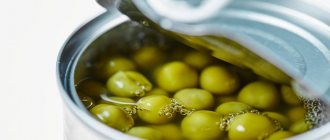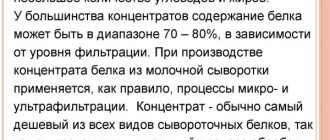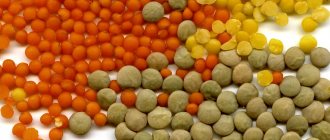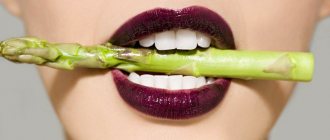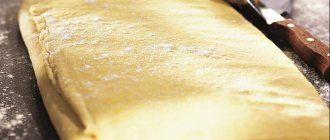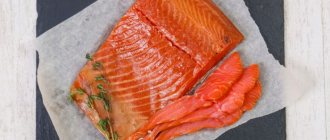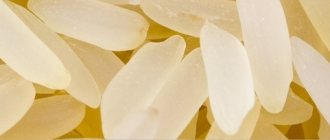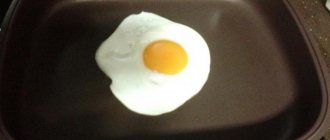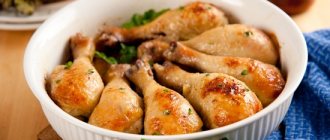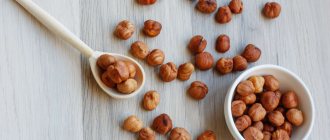According to the biological classification, peas belong to annual plants of the Legume family. It began to be grown a long time ago, back in the 7th millennium BC. Over time, it spread to the Far East, North Africa and Europe. Currently, the description of sowing peas is familiar to all gardeners, without exception. The culture has taken root well in the Russian climate. Grown in the garden, the bean tastes sweet. There are several varieties of it. They all bring benefits. Vitamins in peas are contained in sufficient quantities, as is protein, which is responsible for the health of all cells in the body.
Chemical composition, nutritional value and calorie content of peas
Before the advent of potatoes, the product reigned on the human table. It was his favorite crop, growing in all climate conditions and adapted to many plant diseases. Its taste is irreplaceable. For this, it has become a favorite delicacy all over the world, which is used in the cuisines of many nationalities. The breeders did their best for this. Currently, many types of product are known. These are pod varieties, hybrids.
The nutritional value of peas lies in the fact that they contain useful substances that enter the body with food or in the form of additional supplements. The chemical composition of peas is represented by such elements as:
- magnesium;
- potassium;
- zinc;
- calcium;
- manganese;
- copper;
- phosphorus;
- thiamine;
- riboflavin;
- retinol;
- nicotinic, pantothenic acid;
- iodine;
- vitamin E and B1;
- choline
Each of the microelements present in peas is beneficial for the human body. For example, calcium is involved in the structure of human cells, regulates metabolism and normalizes heart function. Peas contain zinc, which activates blood flow throughout the body.
Calorie content in different dishes per 100 grams:
- fresh beans – 55 Kk;
- puree – 177 Kk;
- boiled – 66 Kk;
- canned peas – 38 Kk;
- dried – 298 Kk.
How many calories are in peas? It cannot be said that this product is high in calories, but people who have problems with excess weight should not eat bean porridge.
What are the benefits of peas? It contains a large amount of protein - 5 grams, carbohydrates - 8.4 grams, fats - 0.3 grams.
Do peas contain starch? The undoubted advantage of this product is that it contains a small amount of starch.
What beneficial substances does it contain?
The composition of pea protein is very rich in nutrients. It contains:
- protein,
- arginine,
- lysine,
- BCAAs
- glutamine,
- histidine,
- tryptophan,
- threonine,
- methionine
We recommend: “What you need to know about the benefits and harms of arginine.”
And also: “Why and how to take glutamine.”
Pea protein is the record holder for the amount of arginine. The volume of this amino acid is 8.7% per 1 g of protein. This is more than soy (7.6%), egg white (5.1%), casein (3.8%) and whey protein (2.3%). The benefits of arginine are invaluable for the release of growth hormone, the synthesis of creatine and nitric oxide - all of which are necessary for muscle growth and realization of muscle potential. In terms of BCAA content (18%), pea protein is comparable to casein (20%).
We recommend studying: “Which creatine is best to choose.”
The product also has a fairly high protein content - an average of 86%. In sports nutrition, pea protein is presented in isolate form with a protein percentage of 84-88%. There are still concentrates, but they contain a smaller mass fraction of protein and they do not have a sufficient degree of purification. For this reason, they are used as raw materials in the production of food products, most often meat.
The benefits of peas for the body
When eaten, peas have undeniable beneficial properties for the body. They are as follows:
- Green peas are useful to eat for those who have problems with swelling of tissues and internal organs. The product removes fluid and salts from the kidneys.
- The benefit of peas for the body is to prevent the development of cancer.
- Sprouted beans have a beneficial effect on lowering cholesterol, removes toxins from the body, and normalizes heart function.
- The medicinal properties of peas lie in the fact that the product contains iodine. This substance treats the thyroid gland in case of its deficiency in the human body.
- Bob relieves eye fatigue and also prevents the development of cataracts and the symptoms of this unpleasant disease.
- Boiled beans are good to eat for people who have stomach problems, with the exception of intestinal flatulence or irritation.
- Bean stimulates the immune system, which is especially important during periods when there is an increase in the number of influenza and ARVI diseases.
- Increases a person’s performance by supplying his body with energy, which makes it easier to endure physical activity.
- Reduces cholesterol.
The product is useful to use for tuberculosis.
REFERENCE: the calorie content of peas is not the highest. This allows people with excess body weight to eat it. Of course, its use should be strictly dosed in this situation, so don’t forget about the carbohydrates contained in legumes!
Use in folk medicine
Peas can be eaten to improve the health of the body. It will help cope with some diseases.
For headaches
To get rid of headaches, grind dried peas into powder. Next, consume two dessert spoons of this powder after meals. The product relieves vascular spasms and pain.
For cystitis
In order to prepare a remedy for cystitis, you need to pour 100 grams of peas with half a liter of water, boil and cook for 5 minutes. Next, the broth is cooled, filtered and taken three times a day, several sips.
When coughing
If you have a cough, you can make an infusion of peas. To do this, pour boiling water over 5 grams of peas and leave covered for 6 hours. Take 2-3 sips four times a day.
For dermatitis
With the help of beans you can fight inflammation on the skin. To do this, pour a glass of boiling water over the stems and leaves of the plant or the peas themselves. Leave for 5 hours. The resulting product should be applied as a lotion to the inflamed areas of the skin.
Masks for dry skin
Use in cosmetology
This product brings benefits not only in the process of eating it. For example, it is widely used in cosmetology. In particular, it maintains the beauty of the skin and cleanses it. For example, with its help they successfully cope with pathologies that spoil a person’s appearance, such as acne, eczema, and psoriasis.
The use of peas in cosmetology is due to the fact that it contains vitamins E and B1. What are their benefits?
| E | antioxidant, its beneficial effect is based on the regeneration of damaged cells, healing of microcracks that form on the skin, eliminating its dryness and wrinkles |
| IN 1 | prevents skin aging, creates a protective film for it, protects the surface from harmful environmental conditions (difficult climate, poor ecology, harmful substances in the atmosphere deposited on the skin, exposure to the sun) |
| potassium | helps balance the optimal level of skin moisture and prevents swelling |
| calcium | has cleansing properties |
| iron | saturates the skin with oxygen |
| zinc | restores and regulates metabolic processes on the skin |
REFERENCE: cosmetologists create modern masks. But many ladies prefer to make them at home. Dry peas are used as the basis for the masks. It is not boiled, but processed to a powder state in a coffee grinder. You can add a little honey and olive oil to the mask.
For women
The benefits of peas for women include not only improving the functioning of all organs and systems of the body, but also appearance. The product contains a large amount of calcium, which is necessary to maintain the beauty of hair, nails and skin.
- The iron contained in the product replenishes hemoglobin, the level of which falls during menstruation.
- Folic acid is a vitamin beneficial for women. Benefits of peas during pregnancy are an indispensable product.
For those who are concerned about the cleanliness of their facial skin, you can make masks based on peas, or purchase them in a specialized store.
During pregnancy and breastfeeding
Peas bring not only benefits, but also harm to health. It is not recommended for women who are breastfeeding. But it is allowed to be used during pregnancy. During this difficult period, you need to be calm, which the folic acid in peas will help.
For men
It’s not so much fats and carbohydrates (BJU), but protein that forms muscle mass. This is true for men who sculpt their own bodies.
In addition, protein gives the body endurance during intense training in the gym.
IMPORTANT: the product has a beneficial effect on a man’s potency and enhances sexual activity. Folic acid improves sperm quality.
For children
What vitamins are in peas? From an early age, children eat peas. The product contains B vitamins, which are indispensable in the formation of the child’s body and psyche.
IMPORTANT: for parents whose children eat little, peas are a way out of a difficult situation, as they increase the child’s appetite. But it is not eaten in large quantities!
In addition, peas contain:
- potassium, magnesium, responsible for the condition of teeth and bones;
- potassium, B vitamins have a beneficial effect on the child’s circulatory system;
- calcium is involved in the construction of the skeletal system and is responsible for the condition of the baby’s teeth;
- amino acids have an impact on the overall development of the child;
- iron is responsible for hemoglobin balance;
- copper accompanies the enzymatic reactions of the child’s body;
- manganese takes part in the functioning of thyroid hormones, which is important for adolescents;
- phosphorus takes part in the formation of the human skeletal system.
Due to its beneficial properties, it is included in the diet of children not only at home, but also in educational institutions.
Compound
Peas contain a lot of microelements.
Also included are:
- Proteins (20 gr.),
- Fats (2 gr.),
- Carbohydrates (49 g.),
- Vitamins B1 and B2, Vitamins A, Vitamin E, C, Vitamin K, H, PP,
- Amino acids and flavonoids,
- Potassium and iron
- Manganese and molybdenum,
- Cobalt and silicon.
Peas can even replace meat products in composition. Therefore, the product is considered an alternative source of nutrition for vegetarians. The fruits contain plant fiber and starch.
Features of eating peas for various diseases
Not all people are absolutely healthy. Most people know their diagnosis: this rule applies to both children and adults. For some diseases, peas should be eaten with caution:
| illness | possibility of use | how to neutralize harmful effects |
| flatulence, duodenitis, syndrome | with the permission of the gastroenterologist | eating in the form of porridge |
| gout | not recommended | not recommended |
| excess weight | contraindicated in diets | not recommended |
| pancreatitis | contraindicated | contraindicated |
| nephritis | with the therapist's permission | consumption in small doses |
How to cook
Soups, salads, sauces and side dishes are prepared from green peas. Pea soup with meat is one of the most popular dishes in almost every family. But vegetarians and fasting people sometimes cook pea cutlets.
The dish is very filling and tasty. But when cooking, it is important not to miss the moment of boiling the peas. One of the most unexpected pea dishes is falafel.
And those who love pates and sauces should definitely try pea hummus, which is often used as a complement to slices of fresh bread.
If you want to surprise your guests, you should prepare pea jelly. When served, it is complemented with fried onions, fried mushrooms or golden brown bacon.
Note to housewives:
Pea porridge - 10 recipes for the whole family
How to cook pea soup - 12 recipes for every taste
Pea cutlets - 9 most delicious recipes
Harm and contraindications for use
Absolute contraindications to the use of the product are observed in the following cases:
- Flatulence.
- Gout.
- Digestive disorders.
It causes intestinal irritation if a person has problems with the gastrointestinal tract. If a diagnosis of gout is made, then eating it is strictly prohibited. He will do harm. The product contains a large amount of protein. This is useful for people who do not have this pathology. But purine compounds will have adverse effects on a person with gout. In 100 gr. bean, the amount of purine compounds is 64 mg - this is approximately 150 mg of uric acid. Its excess in the human body leads to this disease.
It is not recommended to eat peas if you have nephritis. This is explained by the fact that during the processing of food, nitrogenous wastes are formed from protein. They are excreted through the kidneys. If this paired organ is in an inflamed state, the process becomes much more complicated. Toxins that are not removed by them accumulate in the human blood over time.
You cannot completely stop eating protein. It is an important element in the body. Doctors prescribe a special diet for patients, which is aimed at consuming protein in small doses. Per day – approximately 20 grams.
Types and varieties
Peas are cultivated all over the world. This herbaceous plant belongs to the legume family. There are many varieties of this crop.
But the most common ones are:
Peeling
It is characterized by the presence of smooth grains. The fruits are harvested slightly unripe. The main varieties are Vera, first early, salute, primrose.
Cerebral
This species is distinguished by the appearance of peas. They are wrinkled and uneven. These include the varieties Children's Delight, Emerald Pearl, Violena, and Green Stream.
Sugar
This species has fleshy beans. They are advised to be eaten fresh. By the way, the pods of this species are also edible. The main varieties are honey blade, Zhegalova-112, firstborn, ambrosia, sugar-2, inexhaustible-195.
Low growing varieties
These varieties are distinguished by their low stems. The height of the crop is about 30-70 centimeters. The main varieties are the miracle of Kelvedon, grandma's surprise, Chinese, alpha.
Areas of application of peas
Since their cultivation, pea fruits have become an integral part of the diet of residents of Europe, America and Asia. Over time, the beneficial properties of peas were discovered. Back in Ancient Greece and Rome, it began to be used to treat and prevent certain diseases.
Cooking and traditional medicine are not all areas of application of peas. The grains, rich in vitamins and microelements, are used for cosmetic procedures. Specially bred fodder pea varieties are a valuable protein feed for cattle. Peas also have important agrotechnical importance: during the process of growth and ripening, they fill the soil with nitrogen, phosphorus and other nutrients. The plant helps improve the structure of the soil and increase its fertility. When planning crop rotation, peas can act as a predecessor for almost all vegetable crops.
Peas in cooking
Initially, only fully ripened and dried peas were used for cooking. Porridges and soups were prepared from it, ground into flour, which was added to bread and other flour products.
In the 17th-18th century in France, and then in many European countries, peas began to be eaten raw immediately after the formation of peas. Tender and sweet peas were added to salads and used as a side dish. With the development of technology, green peas began to be canned and stored frozen.
Simple and delicious recipes with peas
A wide variety of pea varieties, methods of harvesting and storing them provides almost unlimited possibilities for preparing a wide variety of dishes. Peas are included as the main ingredient in quite simple and tasty recipes known all over the world.
- Soups. The basis for the first course can be any meat, fish, mushroom or vegetable broth. Either pre-soaked dry peas or green peas that are only harvested or frozen are added to it. Depending on the recipe, potatoes, carrots, onions, tomatoes, and various spices are also added to the soup. Recently, pureed pea soups, generously seasoned and decorated with herbs, have become very popular.
- Porridge. To prepare the porridge, place a glass of pre-soaked peas in a saucepan and add four glasses of water. After the water boils, reduce the fire as much as possible. The duration of heat treatment is from 30 minutes to an hour (cooking time depends on the type of peas and the duration of soaking). To season the porridge, you can use fried onions and carrots, cream, olive or butter, meat or mushroom broth.
- Salads. Fresh, canned or frozen green peas are one of the most popular salad ingredients. Peas go well with most foods and are a source of many beneficial substances that are almost completely preserved even after canning. Adding peas to a salad will make it more nutritious, tasty and healthy.
In the cuisines of the peoples of the world you can find a wide variety of recipes using peas: they are boiled, stewed, fried, used as a filling for pies, making flatbreads and meatless cutlets.
Features of cooking dishes with peas
To cook dry peas faster, you should consider some features. It is recommended to pre-soak it in water; the optimal soaking time is from 5 to 7 hours.
It is recommended to salt peas during heat treatment at the very end of cooking. This will help preserve the flavor and prevent the peas from boiling and losing their shape.
There are also unpleasant features When eating peas, an unpleasant phenomenon such as flatulence is observed. To avoid bloating, nutritionists recommend seasoning soups and other dishes with dill. Thoroughly washing the peas under a running stream will also help reduce gas formation. After eating, you should not drink cold water.
Peas in cosmetology
An extract from the fruits and leaves of peas is an effective remedy in cosmetology in the treatment of dermatitis, eliminating various rashes and redness of the skin.
At home, you can take care of your skin by periodically using masks based on pea flour. The procedure helps to even out facial tone, smooth and cleanse the skin, prevent early aging and the appearance of wrinkles, and normalize the functioning of the sebaceous glands. You can prepare a pea mask using one of the following recipes:
- To care for dry and normal skin, mix two tablespoons of flour with warm milk. The mask should have the consistency of liquid sour cream. Next, it is kept on low heat for at least half an hour, cooled, 5-6 drops of rosemary essential oil are added and applied to the face. After 10 minutes, the remaining mass should be washed off with running water.
- For oily skin, a mixture of flour and whey in the same proportions is suitable. The components are mixed well until smooth and left for 20-30 minutes to swell. The mask is applied in an even layer and left for 15-20 minutes.
- To nourish and saturate the skin with vitamins, add the white of one egg and two teaspoons of natural honey to two tablespoons of pea flour.
In cases where the skin requires additional moisture, it is recommended to use fresh milk-ripe peas. A handful of fruits are crushed to a pulp and applied to the skin, avoiding the area around the eyes and mouth. You can wash off the mask after 10-15 minutes.
Peas in folk medicine
Peas are known in folk medicine as a fairly effective remedy against many skin diseases. To treat the affected areas, the white of a raw chicken egg was mixed with the same amount of flour. The well-mixed mass was applied to the affected areas of the skin.
A decoction of young pea shoots helps remove salts from the kidneys and prevents the formation of stones. To prepare the decoction, the crushed stems are poured with water, brought to a boil and filtered. The daily dose is 100 ml, which must be divided into three doses.
For constipation, high sugar levels and atherosclerosis, it is recommended to eat a teaspoon of pea flour daily on an empty stomach. Peas will also help restore blood circulation to the brain, which will improve memory and brain activity.
Peas in dietetics
For people who are unsuccessfully trying to get rid of extra pounds, experts recommend trying the pea diet. Peas contain substances that speed up metabolism, cleanse the intestines and normalize peristalsis, improve blood composition and remove waste and toxins. Fiber creates a feeling of fullness and prevents hunger pangs.
A large number of minerals and vitamins in peas prevent exhaustion of the body when the amount of food ingested decreases, and the high protein content allows you to lead an active lifestyle and supplement your diet with physical activity. To stay in shape in dietetics, you can spend fasting days on peas once a month.
Risks and side effects
Protein powder can be an easy and convenient way to increase your protein intake when you're short on time or need a little help meeting your daily needs. However, keep in mind that protein powder should not completely replace protein intake from food sources.
Protein foods such as meat, fish, poultry, eggs and legumes are rich in protein, but also contain many other important nutrients your body needs.
Pea protein is safe for most people and can be consumed with minimal risk of side effects. However, consuming protein in large quantities can cause several side effects.
Research shows that eating too much protein can cause problems such as weight gain, bone loss, kidney problems and liver dysfunction.
Pea protein can be a little harder to digest than other forms of plant protein, including hemp and rice protein, so it's best to combine it with other protein sources.
Consume pea protein in moderation. This will give you the opportunity to get the unique benefits of protein powder without overdoing it and harming your health.
How to take pea protein
Like animal proteins, the need for plant proteins is calculated in the proportions of 2 grams per kilogram of body weight.
To gain weight, you need to take up to 4 servings per day, mixing the powder with water.
- First dose: in the morning after the main meal as an additional source of protein.
- Second appointment: after lunch.
- Third dose: after training or as a snack.
- Fourth dose: in the evening, after dinner.
As for losing weight , protein consumption in the daily diet increases significantly, while carbohydrates and fats decrease. This does not mean that the number of protein servings will increase, on the contrary. It is enough to use the supplement 2 times a day - in the morning and after training, stirring with clean water. A small number of servings will prevent an increase in calories from carbohydrates and fats in the diet.
